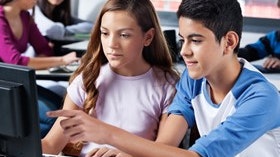Homepage
•
Learning Library
•
Blog
•
Supercharge your classroom with social learning
Expand breadcrumbs
Expand breadcrumbs
- Learning Library
- Blog
- Supercharge your classroom with social learning
- Homepage
- •
- Learning Library
- •
- Blog
- •
- Supercharge your classroom with social learning
Supercharge your classroom with social learning
By R Raphael
May 18, 2015








